Rosie Chader, Ben Capuano, Shreya Vinodh
Departing Northeast Harbor on our beloved Osprey, the College of the Atlantic Fisheries, Fishermen, and Fishing Communities class steamed south for Little Cranberry, also known locally as Islesford. We pulled up to the dock and lobsterman Dave Thomas was waiting for us. The public pier where we were dropped off is a permanent pier that is accessible year round. The mailboat which doubles as the Islesford Ferry shares this pier with fishing and recreational boats.
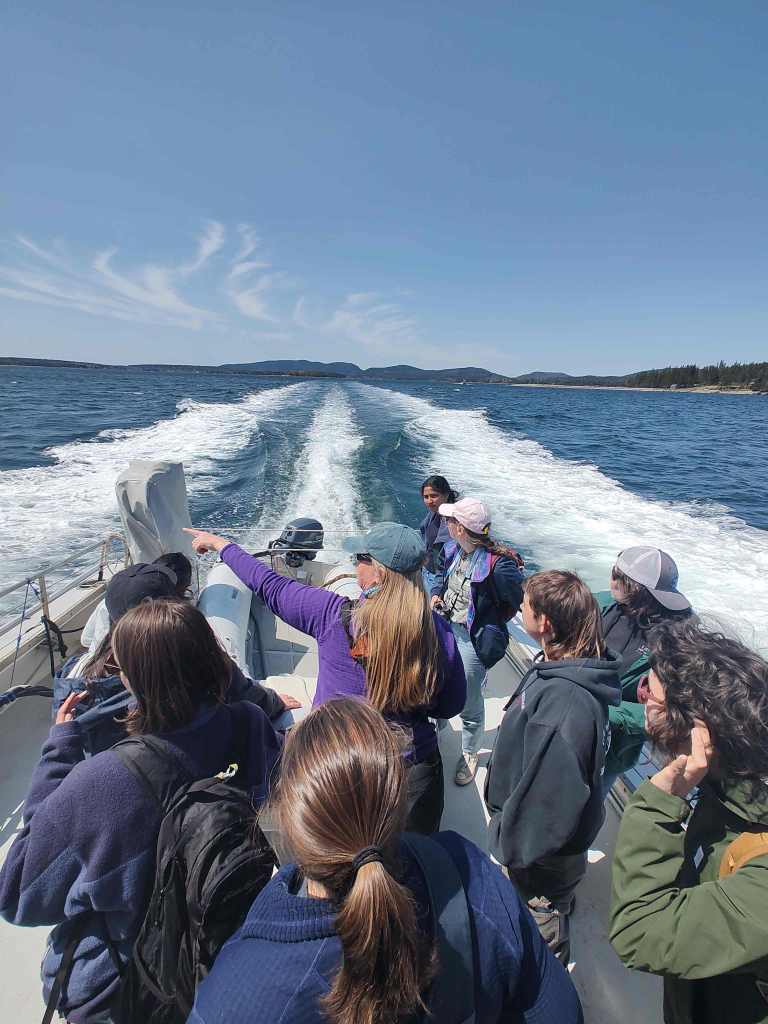


Left to right: View off the back deck of the Osprey midway to Little Cranberry as Natalie Springuel oreints the students to the Cranberries; The authors, Ben and Shreya walking behind Rose, arriving at Little Cranberry; View of Island Girl of Islesford, ME moored off of Little Cranberry.
After meeting Dave at the pier, he talked to us about the waterfront and the fishermen there. He explained how the Cranberry Isles Fishermen’s Co-Op is run, and how lobstermen operate the waterfront. The Co-Op is jointly owned by the fishermen that participate in the venture and is run by a manager that the fishermen hire to oversee the economics of the company. Lobster caught by Co-Op’s lobstermen are brought to the dockside facility to be sorted and consolidated before being brought to the mainland at Southwest Harbor where it can be distributed across Maine, America, and even internationally to nations across the globe.
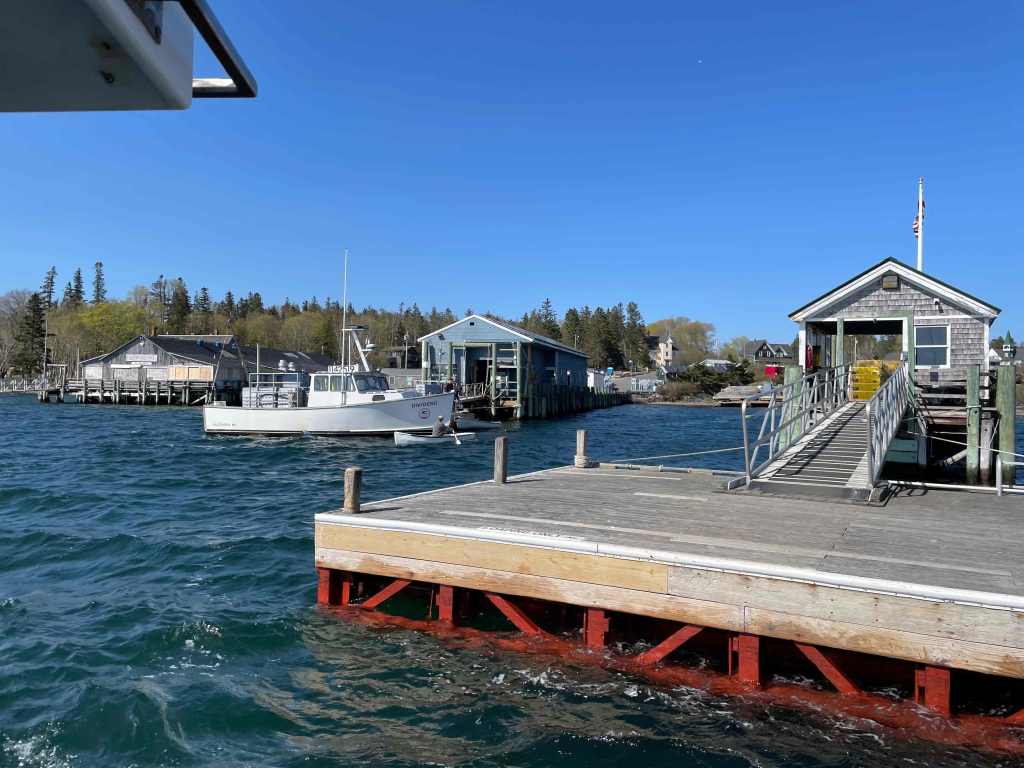
The view from the town dock where we landed towards the coop dock and its boat, the Dividend


Left to right, top to bottom: Dave Thomas on the Islesford Dock introducing himself to the class and orienting the class. Traps along Islesford Dock photographed from the Co-Op Pier.
We left the public pier and waited for the bait truck to come in and unload some giant barrels. Making a mad dash past the patient forklift man, we slipped into the bait shed and gawked at barrels and tubs of putrid-smelling old mackerel, skates, and herring. Another few barrels were full of haddock racks–the leftover body and skeleton of fish that had been stripped of fillets. Bait is among the most capital-intensive investments that the average lobsterman makes over the course of a fishing season. Paucity of once locally abundant bait species like herring drives fishermen to purchase barrels of bait from all manner of distant sources. Thomas explained to us that he’s used rockfish from British Columbia, orange roughy from the south pacific, and most recently pogies from New Jersey in his traps. Lobstermen outside of a co-op often purchase bait from the dock that they fish out of. On Little Cranberry bait is the responsibility of the Co-Op.


Bait. Bait barrels with herring, mackeral, pogies, skates, haddock and redfish racks, and herring. Dave explaining the various baits, and patiently answering a lot of questions from instructor Chris Petersen.
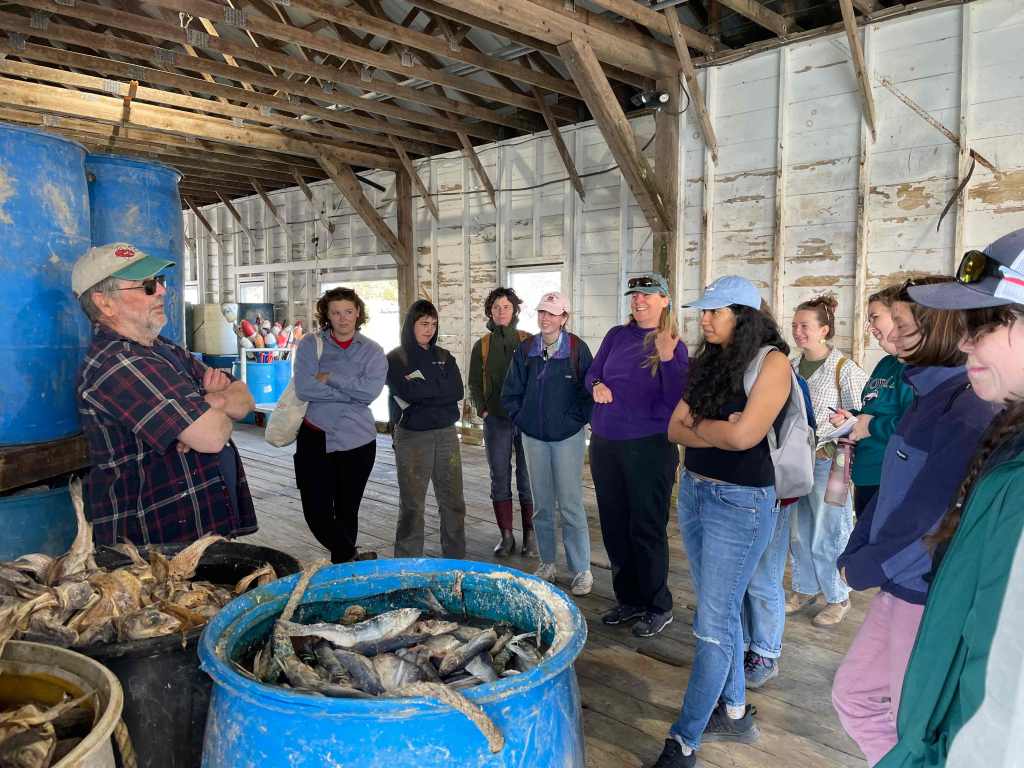
Dave started as a teacher, and was more than happy to answer questions from the class, although in the end we decided that it would less smelly if we went outside and sat in the sun.



Bait. A wide diversity of species and condition, including some skates, so herring looking a bit aged, and some fresher herring.
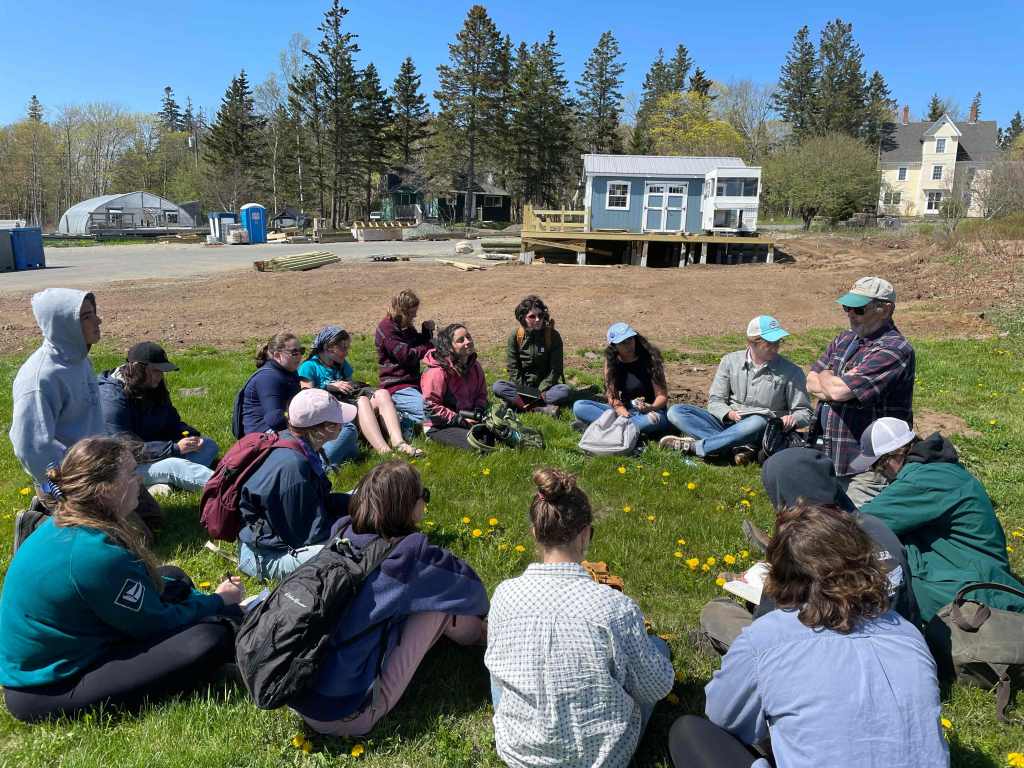
Back in the fresh air, the class sat down in the meadow with Thomas and asked him all the questions bubbling in our minds. Thomas spoke stridently about his belief that his community relies on decentralized networks of individual owner-operators, for this reason he fears the consolidation that is becoming more common in the seafood business across Maine. He told us more about life on the island, how people learn to get along with each other, and how the school system helps keep communities between the different Cranberry Islands connected with one another. Before he was a fisherman, Thomas actually came to this island to work as a teacher in 1975. On a parting note, Thomas told us that he fully intends on continuing to lobster until it’s “not fun for him anymore!”
After our talk, we had some time to explore before our trip back on Osprey, which we took to walk up one of the streets through the neighborhood. We discovered the boat building school house which had an awesome life size cut out of Ben, which he posed next to nicely. There was a playground by the elementary school made up of whalebones on rebar. Megan found Dave again and bought a bag of two lobsters from him.
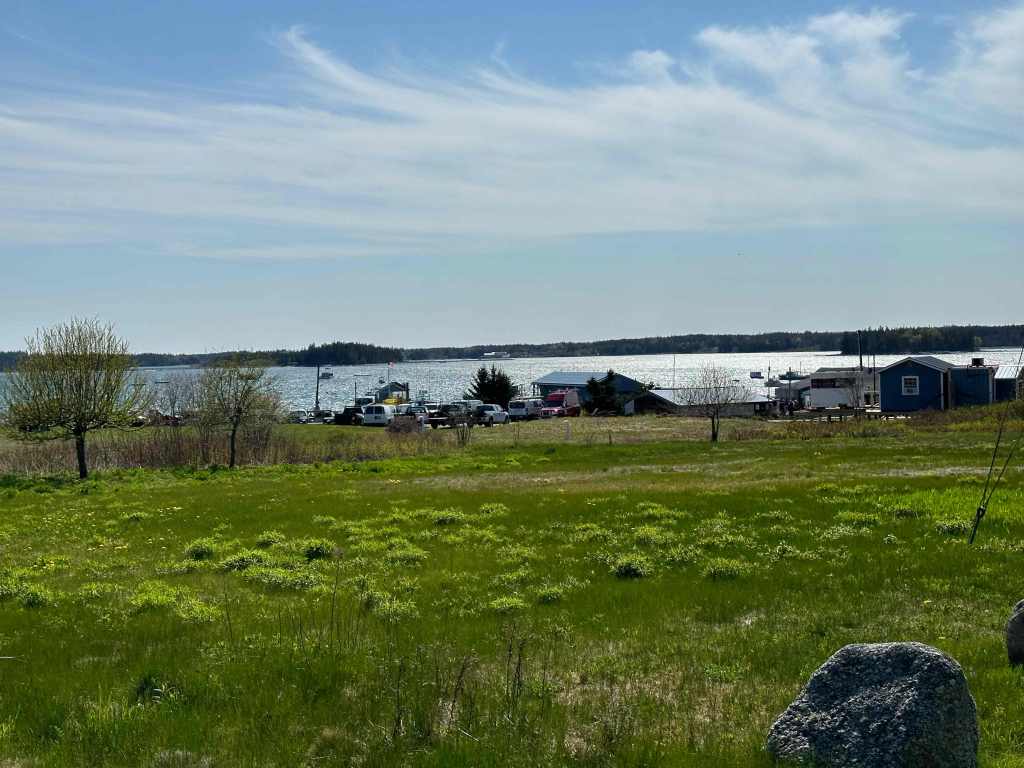



Left to right: Megan with one of her lobsters, Ben adjacent to replica cutout, whale skeleton lawn ornaments near a park in inner Islesford. Below: Ben next to the sign for the Cranberry Isles Fishermen’s Co-Op, and one of the lobsters we bought from the Co-op.
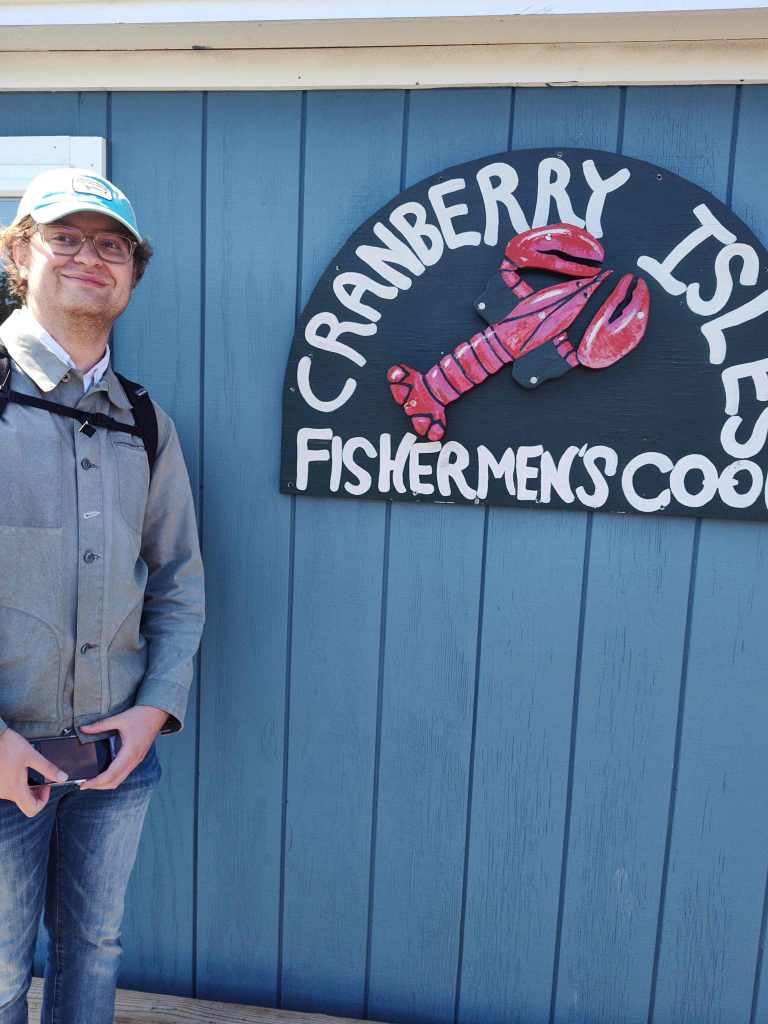
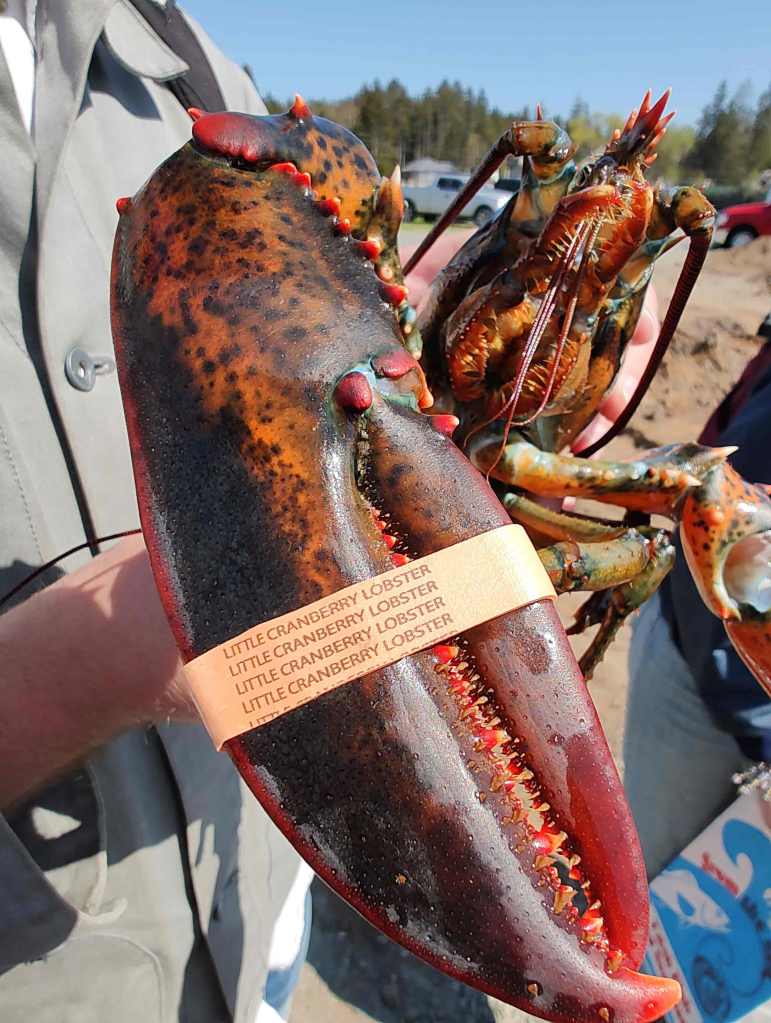
Then it was time to leave, just as soon as we arrived. We snuck past some lobstermen loading traps on the pier and slipped back on our favorite boat.
